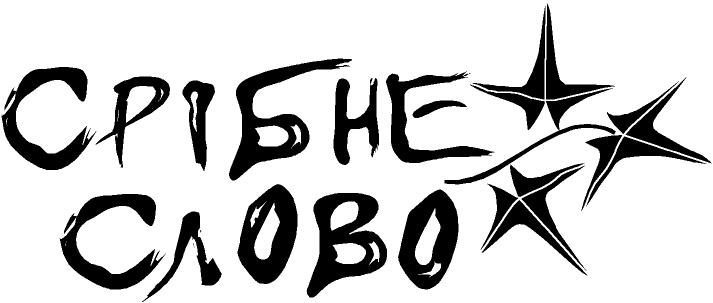- Рубрики
- Філософія, психологія, педагогіка
- Історія
- Політика, право
- Економіка
- Математика
- Фізика
- Хімія, хімічна технологія
- Біологія, валеологія
- Геодезія, картографія
- Загальнотехнічні науки
- ІТ, комп'ютери
- Автоматика, радіоелектроніка, телекомунікації
- Електроенергетика, електромеханіка
- Приладо-, машинобудування, транспорт
- Будівництво
- Архітектура, містобудування
- Мовознавство
- Художня література
- Мистецтвознавство
- Видавнича справа, поліграфія, дизайн
- Словники, енциклопедії, довідники
- Журнал "Львівська політехніка"
- Збірники тестових завдань
- Книжкові видання
- Наукова періодика
- Фірмова продукція
Volume 2, Number 1 (2017)
Andrii Grebeniak, Eugene Miyushkovych, Yaroslav Paramud Digital Interfaces in Cyber-Physical Systems
DIGITAL INTERFACES IN CYBER-PHYSICAL SYSTEMS
Andrii Grebeniak, Eugene Miyushkovych, Yaroslav Paramud
Lviv Polytechnic National University, 12, S. Bandera str., Lviv, 79013, Ukraine
Author e-mail: breskyl@gmail.com
Submitted on 08.05.2017
Grebeniak A., Miyushkovych E., Paramud Y., 2017
Abstract: The analysis of structural solutions of autonomous measuring-computing nodes (AMCN) Ethernet – oriented cyber-physical systems (CPS) have been conducted. The possibility of using the standard industrial sensors and actuators with low-speed serial ports in them have been showned. General basis of telecommunication subsystems has been given. The basic options of realization of telecommunications subsystems have been proposed and the recommendations about choosing a concrete decision by the criterion of necessary computing power for primary data processing. The physical model of telecommunication subsystems has been investigated.
Index Terms: cyber-physical system, telecommunication subsystem, autonomous measuring-computing node, serial port.
Література – 6.
A NEW COMPUTATIONAL MODEL FOR REAL GAINS
IN BIG DATA PROCESSING POWER
Conrad S. M. Mueller
Computer Science Department of the University of the Witwatersrand, Johannesburg, 2050 South Africa
Author e-mail: cmueller@acm.org
Submitted on 25.09.2017
Conrad S. M. Mueller, 2017
Abstract: Big data and high performance computing are seen by many as important tools that will be used to advance science. However, the computational power needed for this promise to materialize far exceeds what is currently available. This paper argues that the von Neumann computational model, the only model in everyday use, has inherent weaknesses that will prevent computers from achieving the envisaged performance levels. First, these weaknesses are explored and the properties of a computational model are identified that would be required to overcome these weaknesses. The performance benefits of implementing a model with these properties are discussed, making a case that a computational model with these properties has the potential to address the needs of high performance computing. Next, the paper presents a proposed computational model and argues that it is a viable alternative to the von Neumann model. The paper gives a simplified outline of an architecture and programming language that express the proposed computational model. The main feature of this computational model is that it processes variables as they become defined. These variables can be processed in any order and simultaneously, avoiding bottlenecks and enabling high levels of parallelism. Finally, the computational model is evaluated against the properties identified as desirable, showing that it is possible to design an architecture and programming language that do not have the weaknesses of the currently dominant von Neumann model. The paper concludes that the weaknesses which limit the performance of current computers can be overcome by exploring alternative computational models, architectures and programming languages, rather than by working towards incremental improvements to the existing dominant model.
Index Terms: Big data, Computer architecture, Computational models, High-performance computing, Programming language.
Література – 12.
BIOTECHNICAL COMPONENTS OF CYBER-PHYSICAL SYSTEMS
Leonid Berezko, Serhii Sokolov
Lviv Polytechnic National University, 12, S. Bandera str., Lviv, 79013, Ukraine
Author e-mail: leonid.berezko@gmail.com
Submitted on 01.02.2017
Berezko L., Sokolov S., 2017
Abstract: We synthesized the general structures of biomedical electric impedance biotechnical systems as a part of cyber-physical systems and propose methodological recommendations on the electric impedance equipment development.
Index Terms: biomedical electric impedance, biotechnical systems, cyber-physical systems.
Література – 17.
CYBER-PHYSICAL SYSTEM FOR SOLVING
TRAVELLING SALESMAN PROBLEM
Oleksandr Muliarevych
Lviv Polytechnic National University, 12, S. Bandera str., Lviv, 79013, Ukraine
Author e-mail: mvalex@i.ua
Submitted on 19.09.2017
Muliarevych O., 2017
Abstract: In this paper new approaches for solving dynamic Travelling Salesman Problem (TSP) in conditions of partly unknown input data are given.
Index Terms: agents, TSP, ant colony algorithm, swarm behavior, distributed TSP, network routing, cyber-physical systems, robotics.
Література – 8.
SURF FEATURES EXTRACTION IN A COMPUTER VISION SYSTEM
Volodymyr Puyda
Lviv Polytechnic National University, 12, S. Bandera str., Lviv, 79013, Ukraine
Author e-mail: vpuyda@ukr.net
Submitted on 19.06.2017
Puyda V., 2017
Abstract: We consider a microcontroller implementation of an algorithm for extracting SURF features of an object in a video stream to be used in a specialized computer vision system.
Key words: computer vision, video stream, SURF features, image identification.
Література – 4.
Volodymyr Vanko Principles of Cyber-Physical Systems Construction for the Needs of Crops Cultivation
PRINCIPLES OF CYBER-PHYSICAL SYSTEMS CONSTRUCTION
FOR THE NEEDS OF CROPS CULTIVATION
Volodymyr Vanko
Lviv Polytechnic National University, 12, S. Bandera str., Lviv, 79013, Ukraine
Author e-mail: vvm@lp.edu.ua
Submitted on 05.06.2017
Vanko V., 2017
Abstract: On the basis of the hierarchical structure of a typical cyber-physical system and main stages of crops cultivation, the list of the subsystems necessary for the creation of such a system is considered. The structures and recommendations for these systems are expounded, and the generalized structural scheme of the given cyber-physical system is described issuing from the four main objects of the research: seeding material, soil, intermediate harvest benefits, harvesting, stocking or primary processing. The application of the matrix method for the assessment of production processes quality as well as final products, which is realized at different hierarchical levels of a cyber-physical system, is proposed. The approach to the analysis of system functioning at all stages of crops cultivation is represented. The principles of data matrices forming at hierarchical levels of a cyber-physical system in combination with the applied subsystem types are presented.
Key words: cyber-physical system, subsystem, crop (culture), matrix, information.
Література – 7.



















